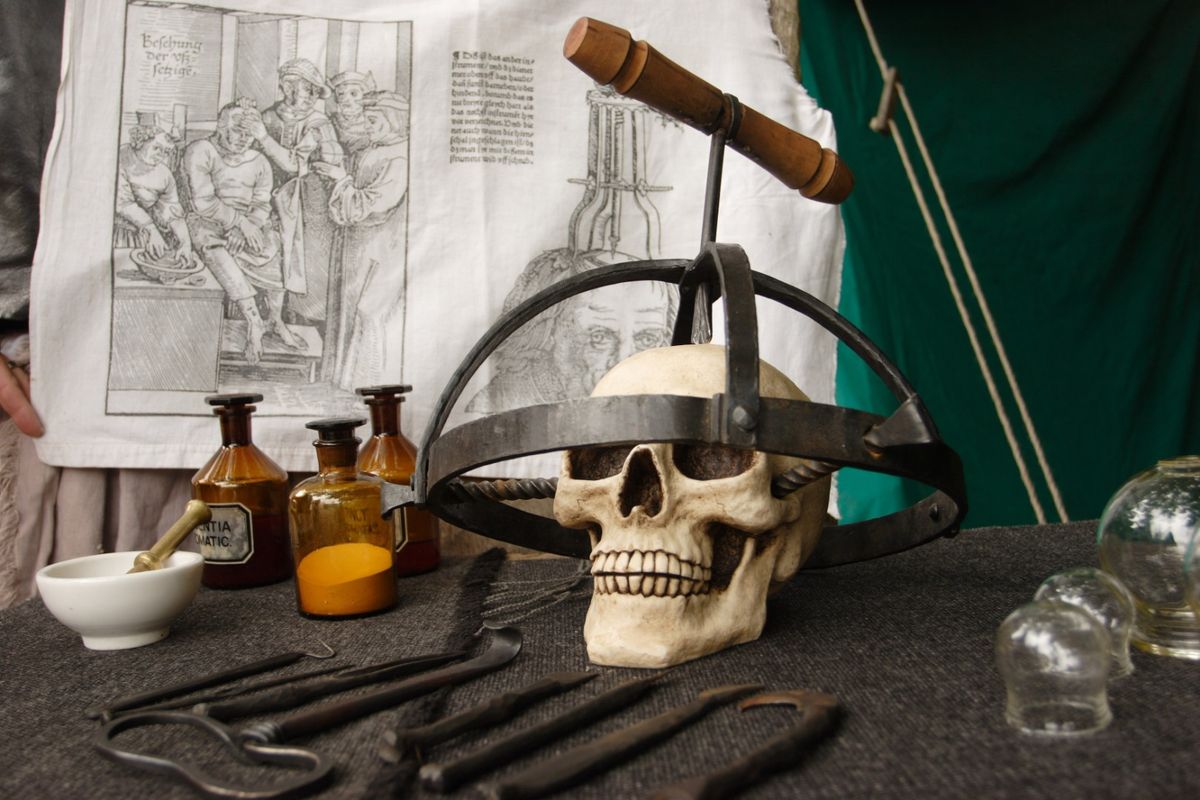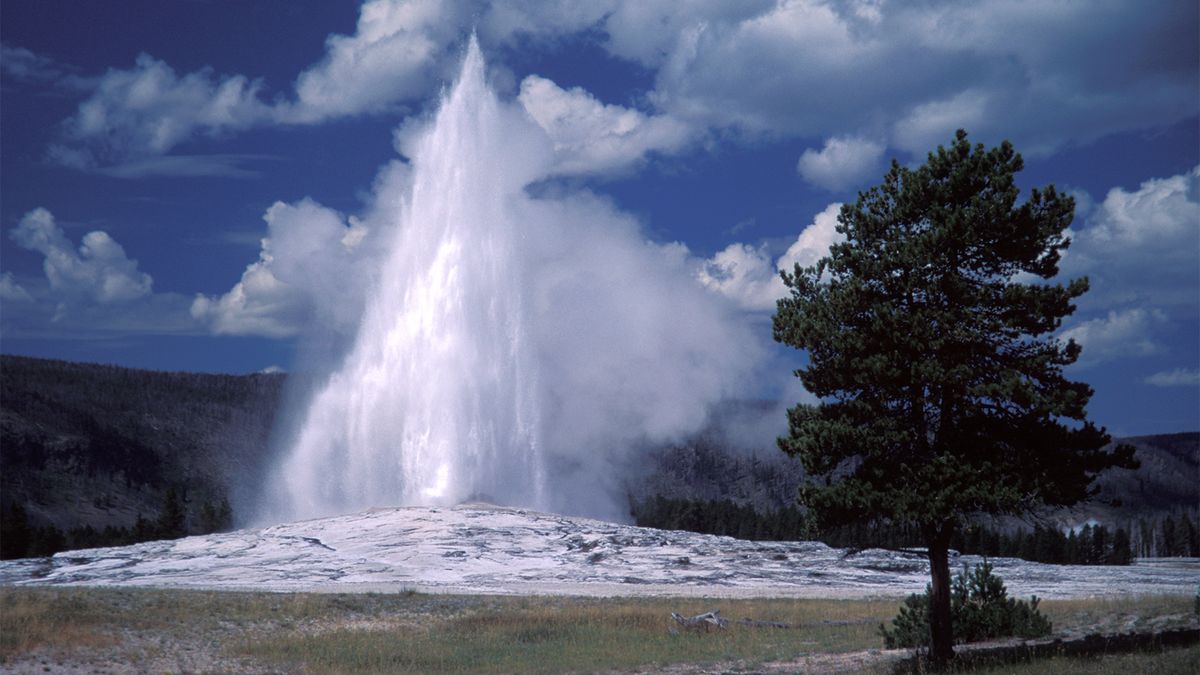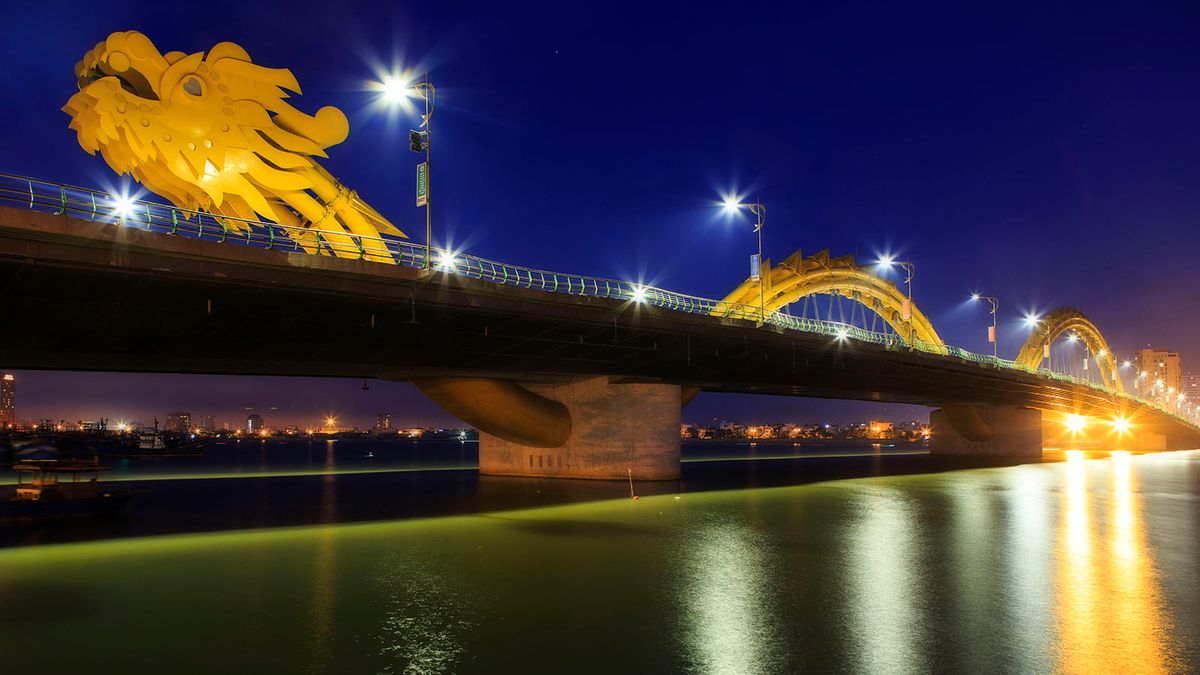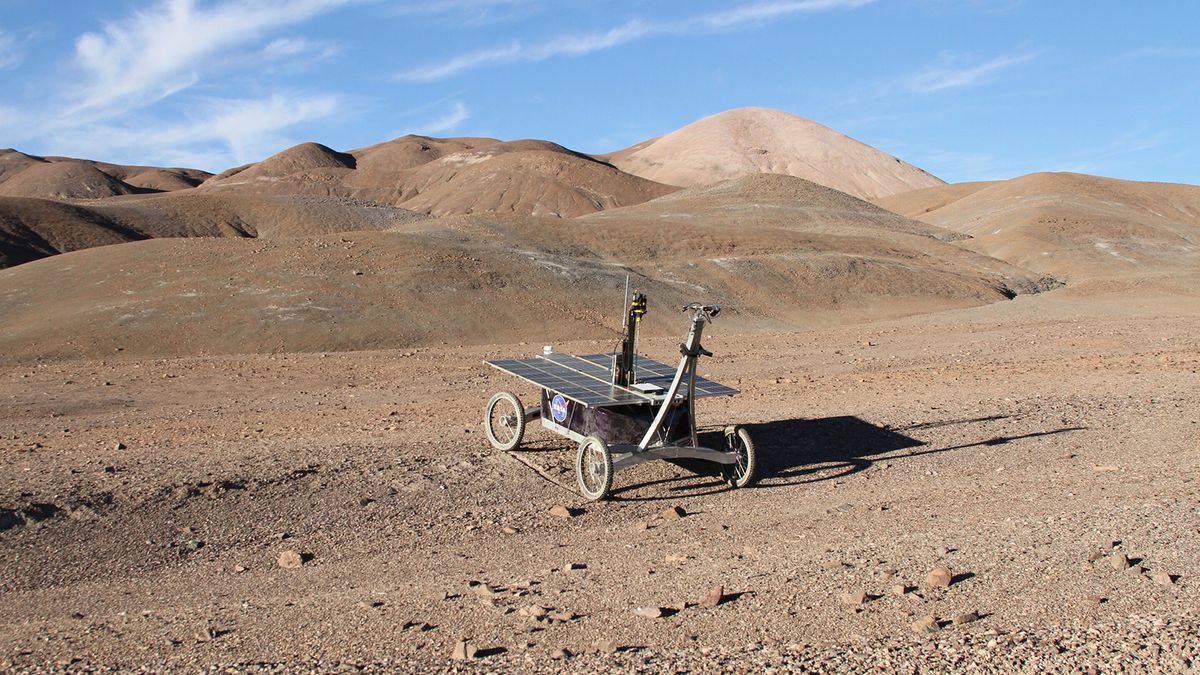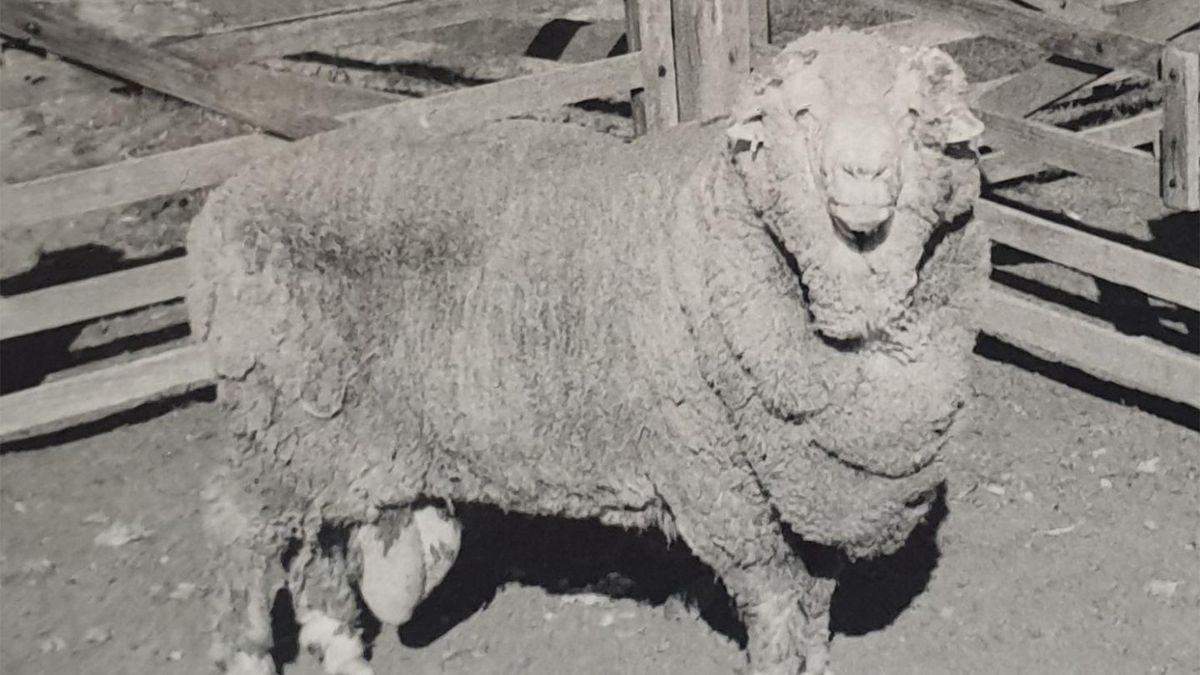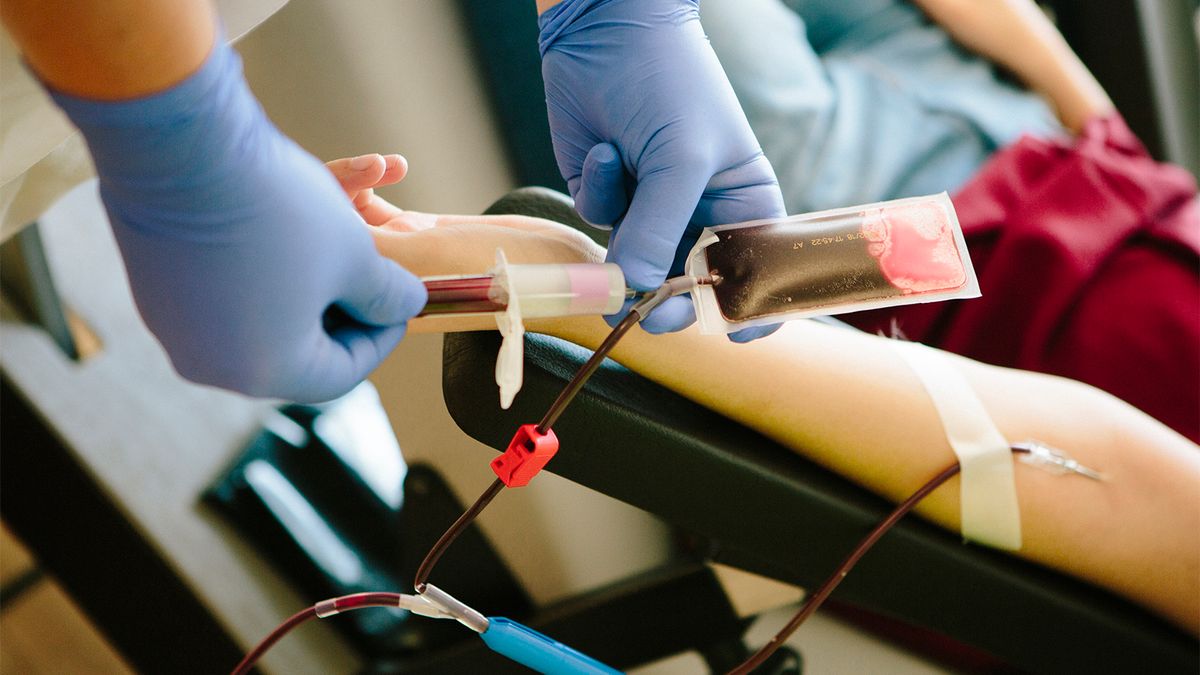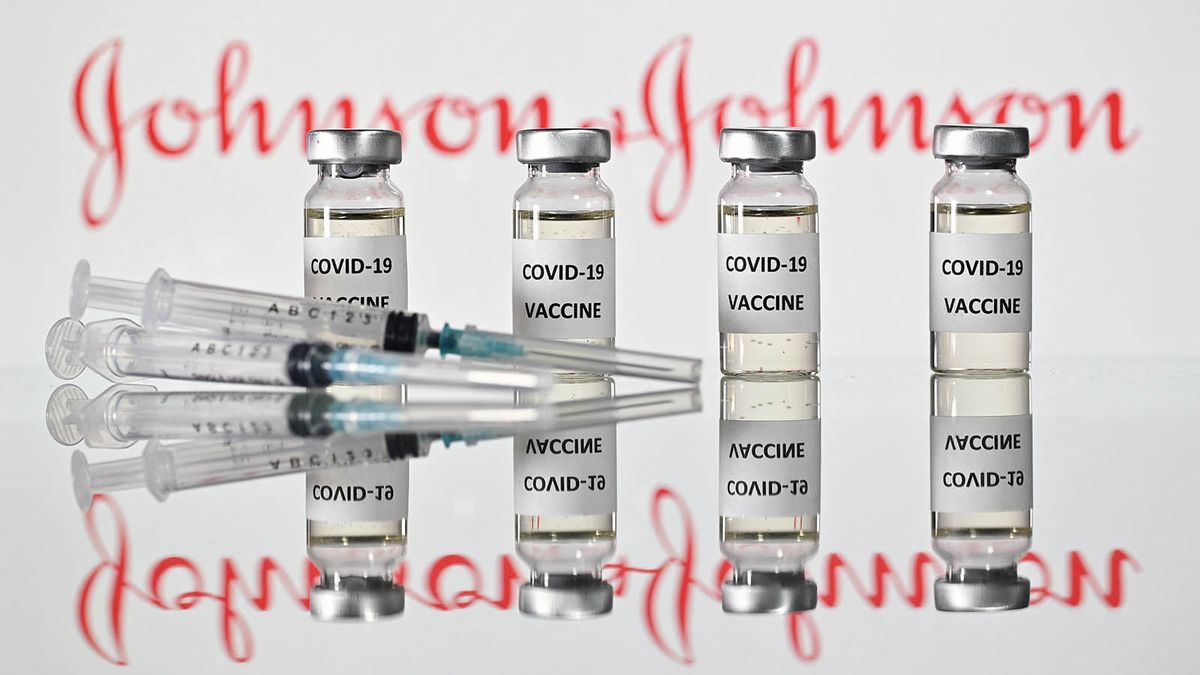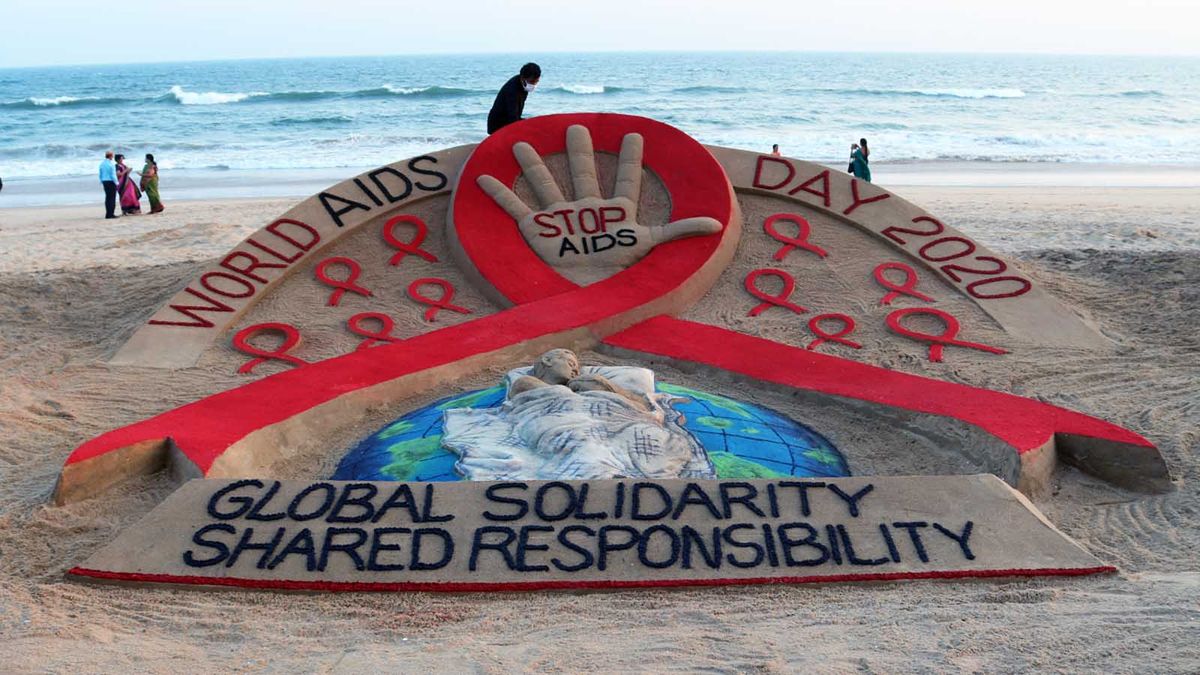ภาพถ่ายโดย PA3 Dana Warr/ได้รับความอนุเคราะห์จาก หน่วยยามฝั่งสหรัฐ The United States Coast Guard Cutter Mohawk ดูเพิ่มเติมภาพถ่ายยามชายฝั่ง

ขนบธรรมเนียมประเพณีที่เข้มแข็ง ความคิดที่ตกอับ และทัศนคติ "ทำอะไรให้น้อยลง" เป็นจุดเด่นของหน่วยยามฝั่งสหรัฐ หน่วยยามฝั่งซึ่งมีเอกลักษณ์เฉพาะตัวในกองกำลังติดอาวุธของสหรัฐฯ ปฏิบัติหน้าที่ตลอดเวลา ได้รับทุนไม่เพียงพออย่างเรื้อรัง ได้รับความไว้วางใจให้มีหน้าที่รับผิดชอบมากมาย แต่มักถูกมองข้าม หากคุณดูรายการโทรทัศน์เกี่ยวกับความหายนะของพายุเฮอริเคน แคทรีนาในปี 2548 คุณอาจเคยเห็น เฮลิคอปเตอร์ของหน่วยยามฝั่งลอยอยู่เหนือน้ำท่วมในนิวออร์ลีนส์ ดึงเหยื่อพายุที่ติดค้างมาจากหลังคาบ้าน แต่หน่วยยามฝั่งเป็นมากกว่าหน่วยค้นหาและกู้ภัย อันที่จริง พวกเขายังต่อสู้ในการสู้รบทางเรือในมหาสมุทรแอตแลนติกในช่วงสงครามโลกครั้งที่สอง
การรับราชการทหารส่วนใหญ่มีเป้าหมายที่ค่อนข้างตรงไปตรงมา: ฝึกฝนและเตรียมพร้อมสำหรับการทำสงครามและต่อสู้กับสงครามนั้นเมื่อจำเป็น แต่หน่วยยามฝั่งมีหน้าที่ ภารกิจ และความรับผิดชอบร่วมกัน เนื่องจากพวกเขาทำงานอยู่เสมอ พวกเขาจึงไม่มีเวลาฝึกฝนมากพอๆ กับสาขาอื่นๆ ของกองทัพ
|
ต่อไป
|
รายละเอียดงานที่ไม่สุภาพของหน่วยยามฝั่งมีสาเหตุมาจากความจริงที่ว่าบริการดังกล่าวเป็นกลุ่มของหน่วยงานรัฐบาลอื่น ๆ ที่ได้รับการจัดตั้งขึ้นในช่วงหลายทศวรรษที่ผ่านมา หน้าที่หลักบางประการของหน่วยยามฝั่ง ได้แก่:
- ป้องกันการลักลอบนำเข้าสินค้าผิดกฎหมายหรือสินค้าปลอดภาษีเข้าท่าเรือสหรัฐฯ การทำให้แน่ใจว่าบริษัทขนส่งจ่ายภาษีศุลกากรและภาษีที่เหมาะสมทั้งหมดสำหรับสินค้าที่จัดส่งไปยังสหรัฐอเมริกาเป็นงานแรกของหน่วยยามฝั่ง
- ป้องกันไม่ให้ผู้ลักลอบนำเข้ายาเข้าประเทศสหรัฐอเมริกา
- ป้องกันการทิ้งสารเคมีอย่างผิดกฎหมาย การประมงที่ผิดกฎหมาย หรือการล่าสิ่งมีชีวิตในทะเล และบังคับใช้กฎหมายคุ้มครองสิ่งแวดล้อมทางทะเล
- ค้นหาและช่วยเหลือใครก็ตามที่ต้องการความช่วยเหลือในสภาพแวดล้อมทางทะเล รวมถึงเรือและเรือที่มีพายุ ผู้ลี้ภัยและผู้อพยพผิดกฎหมายที่พยายามจะลอยไปยังสหรัฐอเมริกา และใครก็ตามที่เกี่ยวข้องกับอุบัติเหตุทางทะเล
- การป้องกันการเข้าเมืองอย่างผิดกฎหมาย
- เฝ้าระวังการโจมตีของผู้ก่อการร้ายและกองกำลังศัตรูอื่นๆ ที่พยายามโจมตีสหรัฐอเมริกาทางทะเล
- การบังคับใช้กฎหมายการเดินเรือ ฝึกอบรมพลเรือนและลูกเรือในการขนส่งเชิงพาณิชย์ในความปลอดภัยทางทะเล และรับรองความเร็ว ความปลอดภัย และความน่าเชื่อถือของการขนส่งในน่านน้ำชายฝั่งของสหรัฐอเมริกา
ต่อไป เราจะดูลำดับชั้นของหน่วยยามฝั่ง
- ลำดับชั้นของหน่วยยามฝั่ง
- เรือและเครื่องบินยามชายฝั่ง
- เข้าร่วมและช่วยชีวิตยามชายฝั่ง
- ประวัติยามชายฝั่ง
ลำดับชั้นของหน่วยยามฝั่ง
หน่วยยามฝั่งนำโดยผู้บัญชาการหน่วยยามฝั่ง ซึ่งดำรงตำแหน่งเมื่อ พ.ศ. 2550 โดยพลเรือเอกแทด อัลเลน การปฏิบัติการของหน่วยยามฝั่งจะแบ่งออกเป็นกองบัญชาการมหาสมุทรแอตแลนติกและแปซิฟิก โดยมีรองพลเรือตรีดูแลแต่ละภูมิภาค คำสั่งแบ่งออกเป็น 9 อำเภอ (ไม่เรียงลำดับกัน จึงเป็นเหตุให้มีเขตที่มีจำนวนมากกว่า 9 แห่ง)

ศูนย์นำร่องชายฝั่งสหรัฐ ภาพถ่าย แผนที่นี้แสดงที่ตั้งของเขตการปกครองทั้งเก้าของคำสั่งของหน่วยยามฝั่งมหาสมุทรแอตแลนติกและแปซิฟิก |
คำสั่งของมหาสมุทรแอตแลนติก:
- เขต 1 - นิวอิงแลนด์ นิวยอร์กตะวันออก และนิวเจอร์ซีย์ตอนเหนือ
- เขต 5 - เพนซิลเวเนีย ทางใต้ของนิวเจอร์ซีย์ เดลาแวร์ แมริแลนด์ เวอร์จิเนีย และนอร์ทแคโรไลนา
- เขต 7 - เซาท์แคโรไลนา จอร์เจีย ฟลอริดาตะวันออก เปอร์โตริโก และหมู่เกาะเวอร์จินของสหรัฐอเมริกา
- District 9 - น่านน้ำทั้งหมดที่อยู่ตรงกลางของสหรัฐอเมริกา, อ่าวเม็กซิโก
คำสั่งแปซิฟิก:
- เขต 11 - แอริโซนา แคลิฟอร์เนีย เนวาดา และยูทาห์
- เขต 13 - ไอดาโฮ มอนแทนา โอเรกอน และวอชิงตัน
- เขต 14 - ดินแดนฮาวายและแปซิฟิก
- เขต 17 - อลาสก้า
แต่ละอำเภอแบ่งออกเป็นภาคส่วน แต่ละภาคส่วนมีหน้าที่รับผิดชอบในการปกป้องทางน้ำภายในประเทศและน่านน้ำชายฝั่งภายในเขตยกเว้นเศรษฐกิจของสหรัฐอเมริกา (น้ำใดๆ ภายใน 200 ไมล์จากชายฝั่ง) ตัวอย่างเช่น เซกเตอร์เซนต์ปีเตอร์สเบิร์กภายในเขต 7 รับผิดชอบชายฝั่งตะวันตกของฟลอริดา บวกกับอ่าวเม็กซิโกส่วนใหญ่ เซกเตอร์บัฟฟาโลรับผิดชอบชายฝั่งทะเลสาบอีรีและทะเลสาบออนแทรีโอ และส่วนหนึ่งของทะเลเซนต์ลอว์เรนซ์ [ที่มา: หน่วยยามฝั่งสหรัฐ ] ศูนย์ปฏิบัติการภายในแต่ละภาคส่วนคือสถานีซึ่งเรือและเรือใช้เป็นฐานทัพบ้าน และสถานีอากาศซึ่งเป็นที่ประจำการของทีมงานสนับสนุนทางอากาศของหน่วยยามฝั่ง
หน่วยยามฝั่งโดยทั่วไปใช้ยศเดียวกับกองทัพเรือสหรัฐฯ
|
|
||
|
|
|
|
|
|
|
|
|
|
|
|
|
|
|
|
|
|
|
|
|
|
|
|
|
|
|
|
|
|
|
|
|
|
|
|
|
|
|
|
|
|
|
|
|
|
|
|
| ที่มา: DefenseLink United States Military Rank and Insignia |
ต่อไป เราจะดูเรือและเครื่องบินที่หน่วยยามฝั่งใช้
เรือและเครื่องบินยามชายฝั่ง

Photo by Roger Wetherall/courtesy U.S. Coast Guard The United States Coast Guard Cutter buoy tender Maple moors in Juneau, Alaska, for a scheduled port visit. |
The Coast Guard's largest ships are the Hamilton Class cutters, 378-foot ships intended for duty on the high seas. There are 12 in service. Reliance Class cutters, in both 270-foot and 210-foot versions, operate as Medium Endurance cutters. These ships may be equipped with a helicopter landing deck, as well as crews to support the helicopters. Below the 65-foot cutter threshold, there are some smaller workhorses. The 25-foot Defender Class boats are designed for fast, flexible responses to a variety of situations, and can be transported on a boat trailer. The 47-foot Motor Life Boat is a steadfast tool for search and rescue missions. The boats are virtually unsinkable and self-right themselves after capsizing.

Photo by PA2 Sara Francis/courtesy U.S. Coast Guard The Coast Guard Marine Safety and Security Team Anchorage demonstrates its ability to defend a stationary target against a water-based aggressor on board two of their Defender Class boats. |
Aircraft are used by the Coast Guard to perform search and rescue, spot smugglers and illegal immigrants and transport people and supplies. Most Coast guard aircraft are helicopters. For medium range missions, the Coast Guard relies heavily on the Sikorsky-built HH-60J Jayhawk helicopter. Shorter missions are suitable for the HH-65A Dolphin, built by Aerospatiale of Texas. While both helicopters are usually based on shore, they can operate from the larger cutters equipped with helipads. One notable feature of the Dolphin is an advanced automatic flight control system. The helicopter can be set to automatically hover at a certain distance above the ground or ocean surface, and can even be set to conduct certain preset search patterns [Source: Global Security]. Both helicopters are due for an extensive modernization program to extend their service life further into the 21st century. The Coast Guard also uses a number of fixed-wing aircraft, including the RU-38A surveillance plane, the HC-130 Hercules transport and the HU-25 Guardian jet.

Photo by PA3 Adam Eggers/courtesy U.S. Coast Guard An HH-60 Jayhawk helicopter from Coast Guard Air Station Astoria, Ore., retrieves a rescue swimmer during a rescue pick-up drill. |
We'll look at how to join the Coast Guard and what Coast Guard life is like in the next section.
|
|
Joining Up and Coast Guard Life

Photo courtesy PA2 Blair Thomas/ U.S. Coast Guard The Coast Guard Training Center and Station in Cape May, New Jersey. |
The U.S. Coast Guard Academy is located in New London, Connecticut. Anyone who wants to join the Coast Guard as a commissioned officer (and meets the eligibility requirements) can apply to attend the Coast Guard Academy. Unlike other U.S. military academies, a congressional petition is not required for entry. The academy provides a rigorous four-year academic experience that also prepares cadets for life as an officer in the Coast Guard. Graduates are commissioned as ensigns. Enlisted sailors and airmen can attend Coast Guard officer candidate school if they want to become commissioned officers.
Another option for joining the Coast Guard is the Coast Guard Reserves. The reserves train and serve one weekend per month and two weeks each year. The 8,000 reserves don't form separate reserve units -- they are integrated into full-time Coast Guard operations. Many non-law enforcement jobs are handled by the Coast Guard Auxiliary, a volunteer organization with about 30,000 members. People who join their local auxiliary are specially trained in boating safety, search and rescue, and other maritime skills. The auxiliary helps with search and rescue, teaches civilian boaters in special seminars, conducts safety inspections and provides introductory youth classes in boating and maritime safety. The Coast Guard also hires about 6,000 civilians to perform a variety of jobs (mostly administrative), both full and part-time.
After basic training, most recruits are assigned to a shore station or a ship. The Coast Guard often uses an apprentice system, where recruits work alongside a more experienced seaman and learn their job with hands-on experience. For more technical jobs, recruits are sent to technical schools ("A-Schools").
Coast Guard cutters make lengthy patrols, during which they don't return to their home station unless they need to. These patrols typically last for four weeks. An example of a typical cutter patrol is the one taken by the USCGC Mohawk (WMEC-913) in January 2006. During the patrol, the crew confiscated 6,000 pounds of cocaine from smugglers on fast boats. A special detection system spotted the boats, and the Mohawk's Dolphin helicopter chased them down, taking out the engines with precise gunfire when necessary [Source: CGCMohawk: Current Patrol]. The Mohawk patrolled oceanic waters off the southern coast of Florida for four weeks before returning to her home base in Key West.

Photo by PA3 Dana Warr/courtesy U.S. Coast Guard The United States Coast Guard Cutter Mohawk |
Life on a cutter is not easy. Space is cramped and you spend a lot of time in very close proximity to your crewmates. However, crews form close bonds and learn to work together smoothly and efficiently. The most important person on any ship, of course, is the captain. Each captain has absolute authority on his or her ship. The personality and habits of a captain can have a tremendous effect on the character of the ship and the way a crew conducts itself. For most mariners, achieving a captaincy is a very high honor.
Between patrols, the crew takes care of ship maintenance or may take on shore duties. Some of them will take advantage of leave time (they get 30 days of leave each year). This pattern will continue for a sailor until his term of active duty has ended. Active duty lasts two or more years, depending on the contract the sailor signed at the time of enlistment. Once active duty is over, the sailor still must provide several additional years of service, either as a reserve or a ready-reserve who can be called to active duty at any time.
As members of a U.S. military organization, all Coast Guard sailors are subject to the Uniform Code of Military Justice. Dismissal from the Coast Guard can take a variety of forms, from an Honorable Discharge to a court martial, depending on the circumstances surrounding the dismissal. See How the Army Works for a full explanation.
Coast Guard veterans and retirees are eligible for a host of benefits, including health and life insurance, low-interest loans for mortgages or small businesses and veterans' health care. The full suite of benefits available may depend on the nature of the veteran's dismissal -- usually an honorable discharge or retirement is necessary for access to all benefits. A comprehensive guide to Coast guard veterans' benefits can be found at Coast Guard Insider.
In the next section, we'll explore the history of the Coast Guard.
Coast Guard History
|
|
The U.S. Coast Guard has a fairly convoluted history, as many different organizations and functions have been combined and recombined under different names. After the American Revolutionary War , the U.S. Navy was disbanded. By 1789, Secretary of the Treasury Alexander Hamilton realized that some kind of naval enforcement agency was needed to make sure tariffs were properly collected. Ten ships with a crew of 10 men each went into service in 1790 as the Revenue Marine Service. Because these cutters were frequently out on patrol when naval accidents occurred, they naturally found themselves in the position to perform search-and-rescue operations. Volunteer organizations that conducted rescue missions later merged with the nascent Coast Guard. Military conflicts in the next few decades lead the Revenue Service to take on port defense tasks. The advent of American fishing around the coast of Alaska created a need for ice breaking and winter rescue capabilities (these remain Coast Guard specialties today). A separate service operated the lighthouses and other navigational aids across the United States until that, too, was merged with the Coast Guard. This growing organization wasn't officially called the Coast Guard until 1915.
แม้ว่าหน่วยยามฝั่งจะเห็นได้ชัดว่าเป็นองค์กรป้องกันและบังคับใช้กฎหมาย แต่หน่วยยามฝั่งจะได้รับการฝึกอาวุธขั้นพื้นฐาน และเรือยามฝั่งส่วนใหญ่ติดอาวุธในทางใดทางหนึ่ง เมื่อสหรัฐฯ เข้าสู่สงคราม หน่วยยามฝั่งก็หายไปเช่นกัน โดยปกติแล้วหลังจากถูกรวมเข้าในกองทัพเรือสหรัฐฯ บริการในช่วงสงครามที่โดดเด่นที่สุดของหน่วยยามฝั่งบางส่วนมาในช่วงสงครามโลกครั้งที่สอง เมื่อหน่วยยามฝั่งจำนวนมากให้บริการคุ้มกันไปยังขบวนขนส่งที่ข้ามมหาสมุทรแอตแลนติกเหนือ เมื่อติดตั้งปืนเพิ่มเติมและชาร์จความลึก คนตัดก็ทำหน้าที่ที่อันตรายมาก โดยคอยดูเรือดำน้ำของเยอรมัน ( เรือดำน้ำ ) เรือดำน้ำล่าขบวนใน "ฝูงหมาป่า" และตอร์ปิโดของพวกเขาจมเรือขนส่งหลายลำ เช่นเดียวกับ USCGC Alexander Hamilton ซึ่งลงไปใกล้เรคยาวิก
ลูกเรือของหน่วยยามฝั่งได้รับการฝึกอบรมที่ดีขึ้นในการโจมตีจากทะเลสู่พื้นดิน ดังนั้นเรือลงจอดที่นอร์มังดีและการบุกรุกทางทะเลอื่นๆ ในสงครามโลกครั้งที่สองจึงมักถูกขับโดยลูกเรือของหน่วยยามฝั่ง

ภาพโดยได้รับความอนุเคราะห์จาก หน่วยยามฝั่งสหรัฐ USCGC Alexander Hamilton หลังจากที่เธอถูกตอร์ปิโดและลูกเรือส่วนใหญ่ของเธอละทิ้งเรือ |
หน่วยยามฝั่งกำลังอยู่ระหว่างความพยายามในการปรับปรุงให้ทันสมัย 25 ปีที่รู้จักกันในชื่อ Project Deepwater งบประมาณปีงบประมาณ 2550 รวมการเพิ่มขึ้น 1 พันล้านดอลลาร์สำหรับการอัพเกรด การวิจัยและพัฒนาของ Project Deepwater [ที่มา: Navy Times ] ความทันสมัยมีความสำคัญ เนื่องจากปัจจุบันหน่วยยามฝั่งมีกองเรือที่เก่าแก่ที่สุดแห่งหนึ่งในบรรดากองทัพเรือของโลก Project Deepwater ไม่เพียงแต่จะอัพเกรดอาวุธของหน่วยยามฝั่ง ระบบตรวจจับยาเสพติด และการดำเนินการค้นหาและกู้ภัยเท่านั้น แต่ยังทำให้บริการทั้งหมดมีประสิทธิภาพมากขึ้น จำนวนลูกเรือที่จำเป็นในการใช้งานเครื่องตัดจะลดลง ปรับปรุงความยืดหยุ่น และช่วยให้หน่วยยามฝั่งทำงานด้วยการจัดหาและระดับเงินทุนที่ต่ำลง
สำหรับข้อมูลเพิ่มเติมเกี่ยวกับหน่วยยามฝั่งสหรัฐและหัวข้อที่เกี่ยวข้อง โปรดดูลิงก์ในหน้าถัดไป
ข้อมูลเพิ่มเติมมากมาย
บทความที่เกี่ยวข้อง
- วิธีการทำงานของกองทัพสหรัฐฯ
- วิธีการทำงานของเฮลิคอปเตอร์
- เครื่องบินขับไล่ทะเล FSF-1 ทำงานอย่างไร
- เรือบรรทุกเครื่องบินทำงานอย่างไร
- Navy SEALS ทำงานอย่างไร
- เรือดำน้ำทำงานอย่างไร
- ถ่ายที่ทะเล: 11 ซากเรืออับปางในชีวิตจริง
- กล้องโทรทรรศน์ทำงานอย่างไร
ลิงค์ที่ยอดเยี่ยมเพิ่มเติม
- หน่วยยามฝั่งสหรัฐ
- ไปหน่วยยามฝั่ง
- United States Coast Guard Academy
- หน่วยยามฝั่งสหรัฐ Auxillary
- ศูนย์ชุมชนยามชายฝั่ง
แหล่งที่มา
- เบลเชอร์, ลอยด์. "คัตเตอร์อินเดียนแดงวิ่งตามผู้ลักลอบขนของเถื่อนในทะเลหลวง หน่วยยามฝั่งสหรัฐ"
http://www.uscg.mil/lantarea/cutter/CGCMohawk/current_patrol.htm - Birkler, Alkire, Button และอื่น ๆ "แผนปรับปรุงกองกำลังน้ำลึกของหน่วยยามฝั่งสหรัฐ" Rand Corporation, 2004. ISBN 0833035150.
- บลู โรส และนาเดน คอรินน์ เจ "หน่วยยามฝั่งสหรัฐ" Millbrook Press, 1 ตุลาคม 1993 ISBN 978-1562943219
- เกนส์, แอน. "หน่วยยามฝั่งออกปฏิบัติการ" สำนักพิมพ์ Enslow กันยายน 2544 ISBN 978-0766016347
- ฮัลเบอร์สตัดท์, ฮันส์. "USCG พร้อมเสมอ" Presidio Press, มกราคม 1987 ISBN 978-0891412564
- โฮลเดน, เฮนรี เอ็ม. "หน่วยกู้ภัยยามชายฝั่งและเครื่องบินลาดตระเวน" สำนักพิมพ์ Enslow กุมภาพันธ์ 2545 ISBN 978-0766017153
- คิม, แพทริเซีย. "งบประมาณยามชายฝั่งลงนามโดยประธานาธิบดี" Navy Times, 4 ต.ค. 2549
http://www.navytimes.com/ - Walling, Michael G. "ทะเลสีเลือด" International Marine/Ragged Mountain Press ฉบับที่ 1 วันที่ 1 พฤษภาคม 2548 ISBN 978-0071457934

